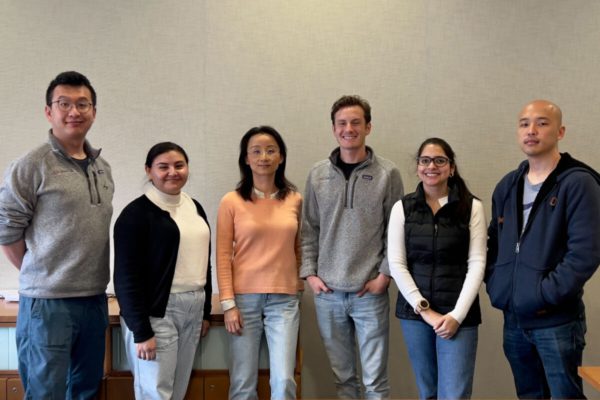By Cristy Lytal

From left, study authors Jiya Eerdeng, Ivon Garcia, Rong Lu, Charles Bramlett, Mary Vergel-Rodriguez, and Yeachan Lee (Photo by Bowen Wang)
Why do some people with a genetic mutation associated with leukemia remain healthy, while others with the same mutation develop the blood cancer? In a new study published in Blood, scientists from the USC Stem Cell laboratory of Rong Lu discovered a mechanism that linked a leukemic mutation to varying potentials for disease development—a discovery which could eventually lead to a way to identify patients with the mutation who are most at risk.
To explore this paradox, first author Charles Bramlett and his colleagues labeled and tracked individual blood stem cells in mice with a mutation in a gene called TET2, which is prevalent in patients with myeloid leukemia. The scientists found that a subset of blood stem cells and their progeny—known as clones—made an outsized contribution to the overall population of blood and immune cells. The over-contributing clones tended to produce a lot of “myeloid” cells including immune cells called granulocytes, which may potentially lead to myeloid leukemia. (…Read More)